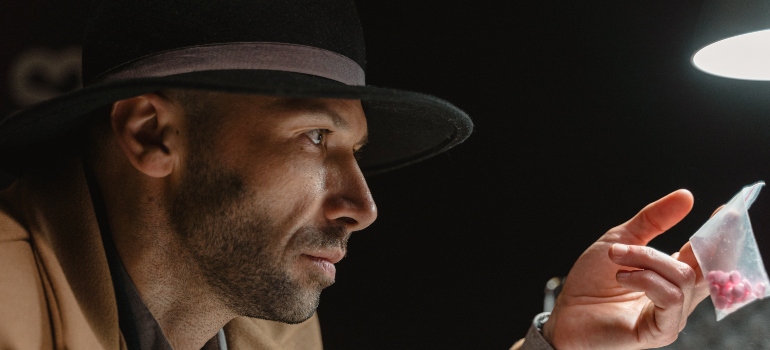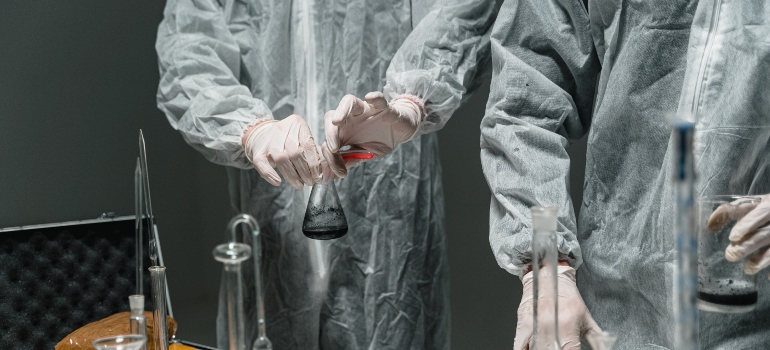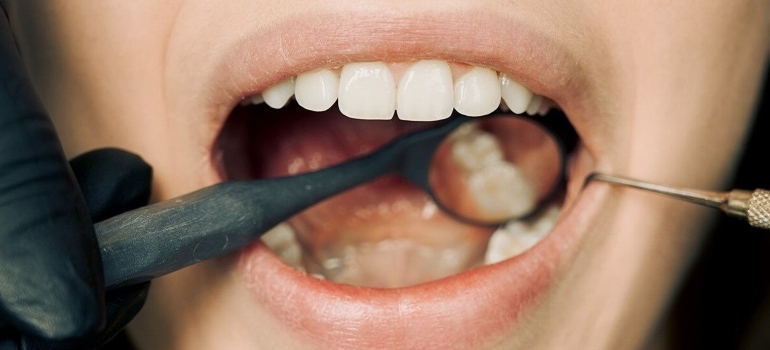Understanding crack cocaine addiction is of utmost importance in addressing the devastating impact it has on individuals and communities. We will delve into various aspects of crack cocaine, shedding light on its definition, development, and patterns of use. We will explore the differences between crack cocaine and cocaine and highlight the signs that indicate a person may be struggling with crack cocaine addiction. Furthermore, we will examine the physical and psychological effects associated with this addiction, both in the short and long term, as well as various treatment options available at rehab centers in West Virginia. By covering these topics comprehensively, we hope to provide valuable insights and resources for individuals grappling with crack cocaine addiction.
What is crack cocaine?
Crack cocaine is a highly addictive stimulant that exerts a powerful grip on individuals ensnared by its potent effects. Derived from cocaine, crack cocaine is a crystallized form that is typically smoked rather than snorted. The name “crack” originates from the characteristic crackling sound it produces when heated.
This illicit drug, known for its intense and immediate euphoric high, gained notoriety in the 1980s due to its devastating impact on communities. The highly concentrated form of cocaine found in crack cocaine leads to a rapid and intense onset of effects, making it particularly addictive. Once inhaled, crack cocaine reaches the brain quickly, producing a surge of dopamine that results in feelings of pleasure, confidence, and heightened energy.
However, these effects are short-lived, often lasting only a few minutes, which drives individuals to seek repeated doses to sustain the euphoria. The addictive nature of crack cocaine lies not only in its ability to produce intense pleasure but also in the swift and intense withdrawal symptoms that follow when the drug’s effects wear off. Individuals may experience profound cravings, restlessness, anxiety, irritability, and depression, compelling them to chase the fleeting euphoria with more doses.

The cycle of crack cocaine addiction can quickly take hold, leading to detrimental physical, psychological, and social consequences that need to be treated at a drug rehab in Cambridge OH. Understanding the definition of crack cocaine is essential in comprehending the depth of its impact and the urgent need for effective interventions to address this alarming public health concern.
How is crack cocaine made and used?
Crack cocaine is typically produced through a chemical process that involves converting powdered cocaine hydrochloride into a solid form suitable for smoking. The process involves mixing cocaine powder with water and a base such as baking soda or ammonia, creating a solution. Heat is then applied to evaporate the water, leaving behind solid crystals of crack cocaine.
Once prepared, crack cocaine is usually smoked by heating the crystals in a glass pipe or tube. The heat vaporizes the drug, allowing it to be inhaled into the lungs, where it is rapidly absorbed into the bloodstream. This method of administration allows the drug to reach the brain quickly, intensifying its effects and providing an immediate and intense high.
Smoking crack cocaine offers a more rapid onset of effects compared to other methods of cocaine use, such as snorting powdered cocaine. The intense rush experienced by individuals after smoking crack cocaine is often described as an overwhelming surge of pleasure and heightened alertness. However, this intense high is short-lived, typically lasting only a few minutes, which contributes to the cycle of repeated use as individuals seek to maintain or recreate the initial euphoria.
It’s important to note that crack cocaine is an illegal substance with severe legal and health consequences. The use of crack cocaine can lead to profound addiction, physical harm, and significant social and personal challenges, as well as spending time at drug rehab Athens OH. Understanding how crack cocaine is made and used underscores the urgency of addressing this issue and providing effective support and treatment for those affected by its harmful effects.

Potency and addictive nature of crack cocaine
Crack cocaine possesses an exceptional potency and exerts a highly addictive nature, contributing to the significant risks associated with its use. Its concentrated form makes it considerably more potent than powdered cocaine, resulting in a rapid and powerful onset of effects.
When individuals smoke crack cocaine, the drug directly delivers to their lungs, swiftly transporting it to the brain and causing an almost instantaneous and intense high. This rapid delivery of cocaine to the brain increases its addictive potential, as it creates a strong psychological reward.
Furthermore, crack cocaine’s addictive nature arises from its ability to quickly induce changes in the brain’s reward and pleasure centers. The drug triggers a surge of dopamine, a neurotransmitter associated with pleasure and reward, resulting in intense feelings of euphoria. The brain rapidly associates crack cocaine use with this pleasurable experience, reinforcing the desire for repeated drug use to recreate the same intense high.
The rapid onset and short duration of crack cocaine’s effects also contribute to its addictive nature. The intense rush experienced after smoking crack cocaine quickly fades, leading to a rapid decline in pleasurable feelings. Consequently, individuals often experience intense cravings for more of the drug, compelling them to engage in a compulsive pattern of drug use to avoid the subsequent crash and withdrawal symptoms.
The highly addictive nature of crack cocaine can quickly lead to a cycle of dependency, where individuals feel compelled to repeatedly use the drug to satisfy cravings and avoid the distressing effects of withdrawal. This strong psychological and physiological dependence makes it extremely challenging for individuals to quit using crack cocaine without appropriate support and treatment at a crack cocaine treatment center in West Virginia.

The difference between cocaine and crack cocaine
Distinguishing between cocaine and crack cocaine is essential in comprehending the nuances of these substances and their respective effects on individuals. Although they share a common origin, cocaine, and crack cocaine differ in various aspects, including their:
- Chemical structure
- Method of ingestion
- Potency
- Addiction potential
Chemical structure of cocaine and crack cocaine
Cocaine, commonly referred to as powdered cocaine, exists as a hydrochloride salt in a white, crystalline powder form. It is derived from the leaves of the coca plant and is classified as a stimulant drug.
On the other hand, crack cocaine is a freebase form of cocaine. It is obtained by chemically altering cocaine hydrochloride through a process that involves mixing it with a base such as baking soda and heating it to remove the hydrochloride, resulting in the formation of solid crystals or “rocks.”
Crack cocaine vs. cocaine method of ingestion
One of the key distinctions between cocaine and crack cocaine lies in the method of ingestion. Cocaine hydrochloride is typically snorted through the nose, where it is absorbed into the bloodstream through the nasal tissues. In contrast, crack cocaine is predominantly smoked. It is heated in a pipe or tube, creating vapors that are inhaled into the lungs, rapidly delivering the drug to the brain.
The potency of cocaine vs. crack cocaine
Crack cocaine is notably more potent than powdered cocaine due to its concentrated form. When crack cocaine is smoked, it produces a faster and more intense high compared to snorting powdered cocaine. The immediate and intense rush of euphoria experienced from smoking crack cocaine contributes to its heightened addiction potential. The rapid onset of effects and the short duration of the high often lead to compulsive drug-seeking behavior as individuals strive to sustain or recapture the intense pleasure.

Cocaine vs. crack cocaine addiction potential
Crack cocaine’s addictive nature is also influenced by the rapid and intense withdrawal symptoms that occur when the drug’s effects wear off. Individuals may experience intense cravings, restlessness, anxiety, irritability, and depression, driving them to seek further doses to alleviate these distressing symptoms.
Luckily, there is a range of treatment modalities, such as dialectical behavior therapy for addiction in WV, that can help. Before you can undergo therapy, however, you will need to spot the signs of crack cocaine addiction first.
Signs of crack cocaine addiction
Recognizing the signs of crack cocaine addiction is crucial in identifying individuals who may be struggling with this destructive substance. Addiction to crack cocaine manifests through a combination of:
- Physical signs
- Behavioral signs
- Psychological signs
Recognizing these signs of crack cocaine addiction is crucial in prompting early intervention and seeking appropriate help and support.
Physical signs
Physical signs can serve as indicators of crack cocaine addiction. Here are some of the most common ones:
- Dilated pupils: Crack cocaine can cause the pupils to become noticeably enlarged, even in well-lit environments.
- Increased energy and hyperactivity: Individuals under the influence of crack cocaine may exhibit heightened energy levels, restlessness, and hyperactive behavior.
- Rapid weight loss: Crack cocaine’s appetite-suppressing effects often lead to significant and rapid weight loss in individuals addicted to the drug.
- Involuntary muscle movements: Users may experience muscle twitches, jerking movements, or tremors as a result of crack cocaine’s impact on the central nervous system.
- Dry or cracked lips: Frequent crack cocaine use can lead to dryness and cracking of the lips, sometimes accompanied by burn marks from heated crack cocaine pipes.
- Nosebleeds: Regular snorting of powdered cocaine, which is often a precursor to crack cocaine addiction, can cause frequent nosebleeds and irritation of the nasal passages.
- Track marks or burns: Individuals may have visible track marks or burns on their hands, arms, or lips from using crack cocaine pipes or heated utensils.
- Skin problems: Prolonged crack cocaine use can lead to skin-related issues such as sores, rashes, or the development of “crack bugs,” which are hallucination-induced sensations of insects crawling under the skin.

It’s important to note that these physical signs alone may not definitively indicate crack cocaine addiction. They can also be associated with other medical conditions or substance abuse. However, if you suspect someone may be struggling with crack cocaine addiction based on these physical signs, it is crucial to encourage them to seek professional help and support from healthcare providers or addiction specialists.
Behavioral signs
Behavioral signs can provide important clues when identifying individuals who may be grappling with crack cocaine addiction. While the manifestation of these signs may vary, here are some common behavioral indicators of crack cocaine use:
- Neglecting responsibilities: Individuals addicted to crack cocaine often neglect their responsibilities at work, school, or home. They may frequently miss deadlines, skip classes, or fail to fulfill obligations.
- Financial problems: Maintaining a crack cocaine habit can be financially draining. People struggling with addiction may experience financial difficulties.
- Erratic behavior: Crack cocaine addiction can lead to erratic and unpredictable behavior. Individuals may display impulsive decision-making, engaging in risky activities without considering the consequences.
- Social withdrawal: As addiction takes hold, individuals may withdraw from social activities and isolate themselves from friends, family, and loved ones.
- Changes in social circle: People addicted to crack cocaine may associate with a new group of individuals who also use the drug or engage in illicit activities.
- Secretive behavior: Individuals may become more secretive, guarding their personal belongings, locking doors, or being evasive about their whereabouts.
- A decline in personal hygiene: Individuals may exhibit poor grooming habits, such as neglecting to bathe, wearing clean clothes, or maintaining dental hygiene.
- Changes in sleep patterns: Crack cocaine use can disrupt sleep patterns, leading to irregular sleep schedules or insomnia.
- Unexplained financial or legal troubles: Addiction to crack cocaine can result in legal issues, such as arrests for drug possession or engaging in illegal activities to obtain money for drugs.
If you observe these behavioral signs in someone you know, it is important to approach the situation with empathy and concern. Encouraging them to seek professional help from healthcare providers, addiction specialists, or support organizations can be a crucial step toward recovery.

Psychological signs
Psychological signs can provide valuable insights into the presence of crack cocaine addiction in individuals. While each person’s experience may vary, here are some common psychological indicators:
- Intense cravings: Individuals addicted to crack cocaine often experience strong and persistent cravings for the drug. These cravings can become all-consuming and difficult to resist, driving the individual to engage in compulsive drug-seeking behavior.
- Mood swings: Crack cocaine use can lead to significant mood fluctuations. Individuals may exhibit rapid shifts in mood, ranging from euphoria, increased confidence, and excitability to irritability, agitation, and even anger.
- Anxiety and restlessness: Individuals may experience heightened levels of nervousness, an inability to relax, and a constant sense of unease.
- Paranoia and suspiciousness: Prolonged crack cocaine use can contribute to the development of paranoid thoughts and suspiciousness. Individuals may harbor irrational fears, become excessively guarded, and believe that others are out to harm them.
- Hallucinations: In some cases, crack cocaine addiction may lead to hallucinations, which are perceptual distortions or sensory experiences that are not based on reality.
- Cognitive impairment: Chronic crack cocaine use can impair cognitive functioning and lead to difficulties with attention, concentration, memory, and decision-making.
- Depression and emotional instability: Prolonged crack cocaine use can contribute to the development of depression and emotional instability. Individuals may experience prolonged periods of sadness, hopelessness, and despair. They may also exhibit emotional volatility, with rapid shifts between high and low moods.
- Decreased motivation: Crack cocaine addiction can result in a loss of interest and motivation in activities that were once enjoyable or important.
Similar to physical signs, it’s important to remember that these psychological signs alone may not definitively indicate crack cocaine addiction.

Physical and psychological effects of crack cocaine addiction
Crack cocaine addiction can have profound physical and psychological effects on individuals, both in the short term and the long term. Understanding these effects is crucial in comprehending the damaging consequences of crack cocaine use. Here are some examples of the physical and psychological effects associated with crack cocaine addiction:
Short-term effects of crack cocaine addiction
- Intense euphoria: One of the primary short-term effects of crack cocaine is an immediate and intense sense of euphoria, accompanied by a surge of energy and heightened alertness.
- Increased heart rate and blood pressure: Crack cocaine use can lead to a rapid increase in heart rate and blood pressure, which can pose serious risks, particularly to individuals with pre-existing cardiovascular conditions.
- Dilated pupils: Crack cocaine use often results in dilated pupils, where the pupils appear larger than usual due to the drug’s impact on the autonomic nervous system.
- Decreased appetite: Crack cocaine acts as an appetite suppressant, leading to a diminished desire for food and resulting in weight loss.
- Insomnia: The stimulating effects of crack cocaine can disrupt sleep patterns, leading to difficulties falling asleep or maintaining a regular sleep schedule.
- Agitation and irritability: Short-term use of crack cocaine can contribute to increased agitation, irritability, and restlessness.
Long-term effects of crack cocaine addiction
- Cardiovascular problems: Prolonged crack cocaine use can lead to serious cardiovascular issues, including heart disease, heart attacks, and strokes. The drug’s impact on blood vessels and the heart can have lasting and potentially life-threatening consequences.
- Respiratory problems: Smoking crack cocaine can cause respiratory issues, such as coughing, shortness of breath, and lung damage.
- Cognitive impairment: Chronic crack cocaine use can result in long-term cognitive deficits, affecting memory, attention, and decision-making abilities. Individuals may experience difficulties with learning, problem-solving, and concentration.
- Dental problems: Frequent crack cocaine use, particularly smoking the drug, can contribute to dental issues, including tooth decay, gum disease, and tooth loss.
- Gastrointestinal issues: Crack cocaine use can lead to gastrointestinal problems, such as stomach ulcers, abdominal pain, and digestive system damage.
- Increased risk of infectious diseases: Individuals addicted to crack cocaine may engage in risky behaviors, such as sharing drug paraphernalia or engaging in unprotected sex, increasing their vulnerability to infectious diseases like HIV/AIDS and hepatitis.

Psychological effects of crack cocaine addiction
- Depression: Prolonged crack cocaine use can contribute to the development of depression and persistent feelings of sadness and hopelessness.
- Anxiety and paranoia: Crack cocaine addiction can induce heightened anxiety and paranoia, leading individuals to become excessively suspicious or fearful of others.
- Impaired judgment and decision-making: Crack cocaine addiction can impair cognitive function, leading to poor judgment, impaired decision-making abilities, and a higher propensity for engaging in risky behaviors.
It is crucial to recognize and understand these physical and psychological effects of crack cocaine addiction to prompt early intervention and provide appropriate support and treatment for individuals struggling with addiction.
Treatment options for crack cocaine addiction
When it comes to addressing crack cocaine addiction, a range of treatment options are available to support individuals on their path to recovery. These options include:
- Medication-assisted treatment (MAT)
- Behavioral therapy
- Contingency management
- Support groups
- Individual counseling for cocaine addiction
- Family therapy for crack cocaine addiction
- Holistic approaches
Medication-assisted treatment (MAT)
Medications such as methadone or buprenorphine are usually a part of a comprehensive treatment plan for crack cocaine addiction. These medications help reduce cravings and withdrawal symptoms, facilitating the recovery process. MAT typically combines itself with counseling and behavioral therapies for optimal outcomes.

Behavioral therapy for crack cocaine addiction
Various evidence-based behavioral therapies are effective in treating crack cocaine addiction. Cognitive behavioral therapy for substance use disorders in WV helps individuals identify and modify dysfunctional patterns of thinking and behavior associated with drug use.
Moreover, Motivational Interviewing (MI) is a collaborative approach that enhances motivation and commitment to change, promoting self-efficacy and resilience.
Contingency management
This behavioral intervention involves providing incentives, such as vouchers or rewards, to individuals who achieve abstinence from crack cocaine or engage in treatment-related goals. It reinforces positive behaviors and encourages ongoing recovery efforts.
Support groups
Support groups, such as Narcotics Anonymous (NA), provide individuals with a supportive community of peers who understand the challenges of addiction. These groups offer a safe space for sharing experiences, providing encouragement, and offering guidance on maintaining sobriety.
Individual counseling
One-on-one counseling with a qualified therapist or addiction counselor allows individuals to address underlying emotional issues, develop coping strategies, and work on relapse prevention. Treatment centers can tailor counseling sessions to individual needs and may incorporate various therapeutic approaches.
Family therapy
Involving family members in the treatment process can be beneficial, as it helps address relationship dynamics, improves communication, and provides support to both the individual in recovery and their loved ones.
Holistic approaches to crack cocaine addiction treatment
Complementary and holistic therapies, such as yoga, meditation, art therapy rehabilitation, and mindfulness practices, can be integrated into treatment plans to promote overall well-being, reduce stress, and enhance recovery.
It’s important to note that treatment centers need to personalize the therapy approach to meet the unique needs of each individual. Combination therapies, such as a blend of medication-assisted treatment, behavioral therapy, and support groups, tend to yield the most comprehensive outcomes. Treatment should be ongoing and adaptable, adjusting to the individual’s progress and changing needs.
However, this does raise the cost of therapy somewhat. That is why it is also important to ask about insurance coverage such as Blue Cross Blue Shield drug rehab coverage. You may also want to find out if your insurance provider covers aftercare, as it is a critical component in crack cocaine addiction treatment.

Aftercare for crack cocaine addiction
Aftercare plays a vital role in the successful maintenance of sobriety following crack cocaine addiction treatment. It provides individuals with continued support, resources, and guidance as they navigate the challenges of recovery. Here are some key components of aftercare for crack cocaine addiction:
- Ongoing counseling and therapy: Continued counseling and therapy sessions are crucial in aftercare to address any lingering psychological and emotional issues, develop healthy coping mechanisms, and prevent relapse.
- Support groups: Involvement in support groups, such as Narcotics Anonymous (NA) or other peer-led recovery groups, can be immensely beneficial. These groups provide a sense of community, understanding, and accountability.
- Relapse prevention strategies: Aftercare programs focus on equipping individuals with relapse prevention techniques and skills to navigate triggers and high-risk situations.
- Continued education and skill-building: Aftercare may involve workshops, educational programs, or vocational training to help individuals rebuild their lives, enhance employment prospects, and cultivate new interests.
- Regular check-ins and follow-ups: Regular follow-up appointments with healthcare providers or addiction specialists are essential for monitoring progress, addressing any concerns, and adjusting treatment plans if necessary.
- Healthy lifestyle choices: This includes promoting regular exercise, proper nutrition, adequate sleep, and stress-reducing activities.
We cannot overstate the importance of aftercare. It provides individuals with the tools, resources, and ongoing support needed to navigate the challenges of maintaining long-term recovery from crack cocaine addiction. Therefore, questions such as “Does FMLA cover rehab?” should be at the forefront. You need to be able to attend your aftercare program, after all.
Overcoming the grip of crack cocaine
Crack cocaine addiction is a serious concern, but there is hope for recovery. By understanding the nature of addiction, recognizing its signs, and exploring effective treatment options, individuals can embark on a journey toward healing.
Furthermore, you are not alone in your struggle with crack cocaine addiction. Recovery is possible through effective treatment and ongoing aftercare. Believe in your strength, embrace support, and trust in the brighter future that awaits you. You can overcome this challenge and build a fulfilling, sober life.



